Parameters in room acoustics
Reverberation time
The reverberation time is one of the most important factors for evaluating room acoustics. When sound waves are reflected on hard (room) surfaces several times, reverberation results. The reverberation time (expressed in seconds) defines the reverberation of a room. Example: A church has a very long reverberation time, whereas a recording studio or a cinema has a very short reverberation time.
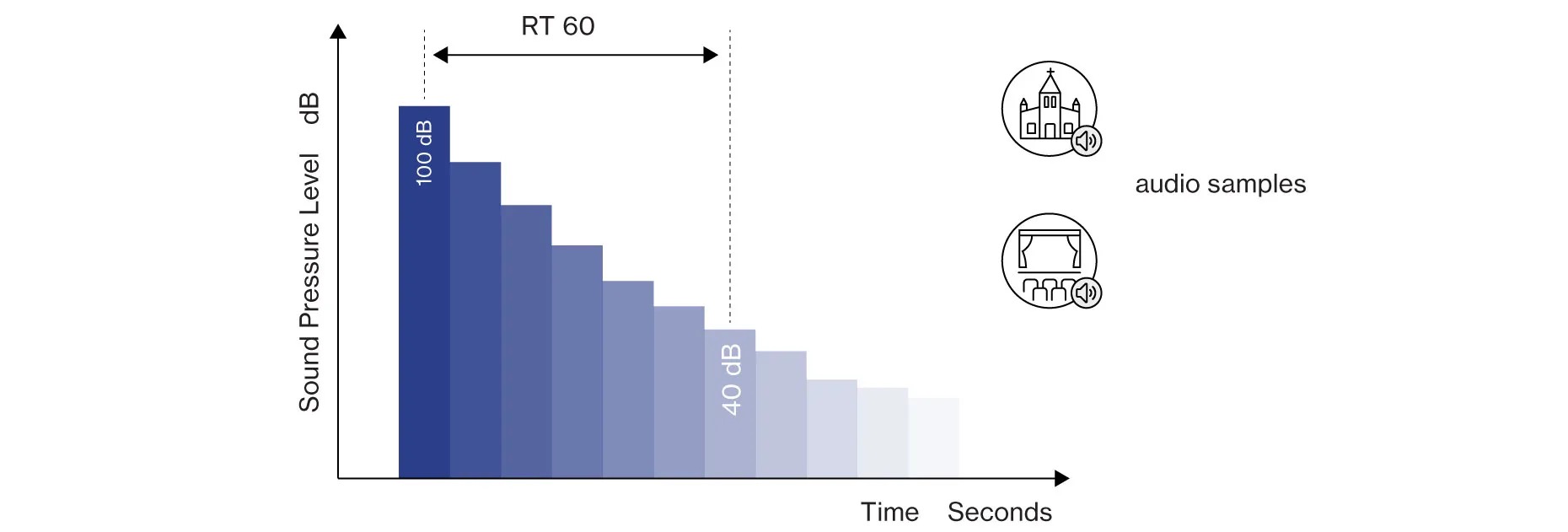
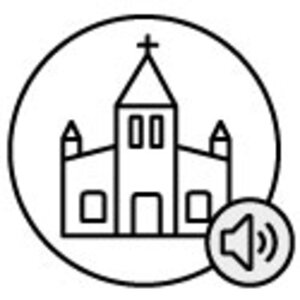
Church
Play audio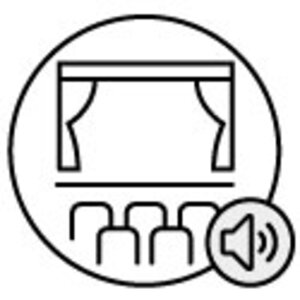
Theater
Play audioThe specification of the standard DIN 18041 provides a recommendation for an appropriate reverberation time. This depends on the room volume as well as the use of the room. Depending on the room size, between 0.6 and 0.8 seconds are specified for offices. In reverberant rooms, people intuitively speak louder, which increases the overall sound level in the room – this is referred to as the Lombard effect.
In order to measure the reverberation time, the time it takes for the level of a sound event (e.g. a bang) in a room to fade by 60 dB is ascertained. It is thus also referred to as RT 60, “Reverberation Time 60”. The reverberation time can be calculated using the so-called Sabine equation, or can be measured directly (acoustic measurement).
The reverberation time directly impacts the speech intelligibility. The shorter this time is, the more intelligible the speech.
Speech intelligibility
Besides the reverberation time, the speech intelligibility is an important factor for assessing room acoustics. The Speech Transmission Index (STI) evaluates speech intelligibility from 0 (bad) to 1 (excellent). Speech intelligibility depends, among other things, on the reverberation time. In the case of long reverberation times, this intelligibility is automatically worse, whereas it is better in the case of short reverberation times. Good speech intelligibility is particularly important in rooms in which a person speaks in front of a group, e.g. in lecture halls or classrooms.
The situation is different in open office spaces: if speech intelligibility were too good here, this would be a distraction factor. The distraction threshold is at an STI of about 0.5: if the speech intelligibility drops below this value, the degree of distraction also drops rapidly. Psychoacoustic studies have shown that the perceived disturbance as well as the error rate increase when speech intelligibility is too good.
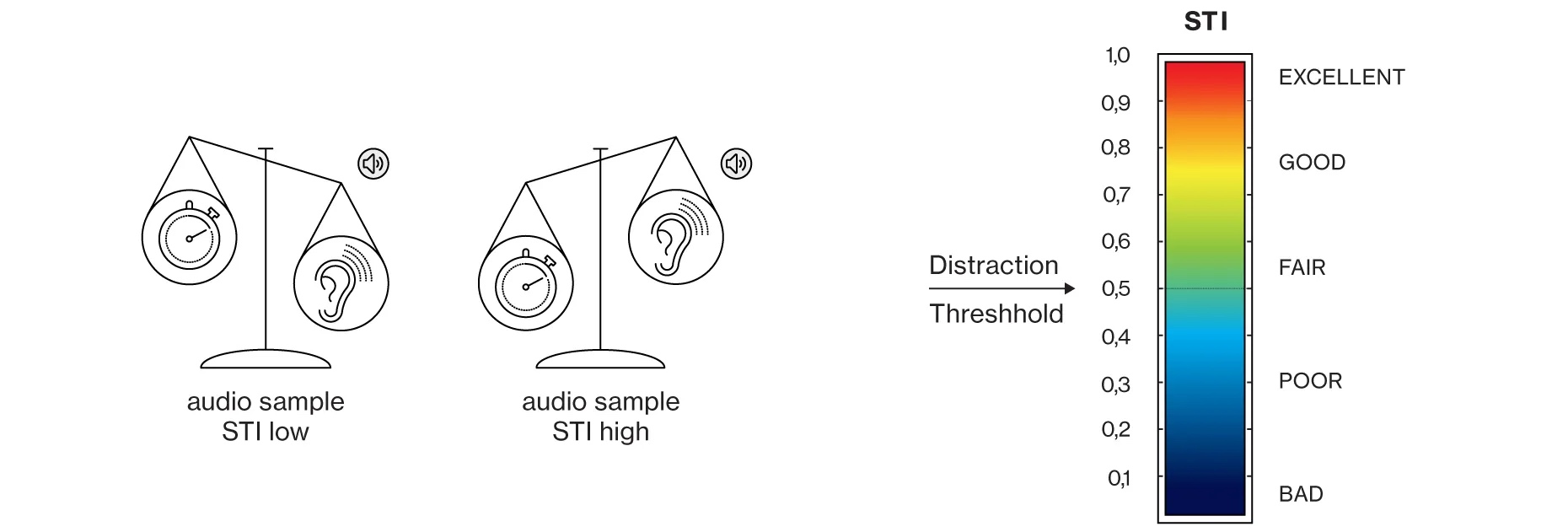
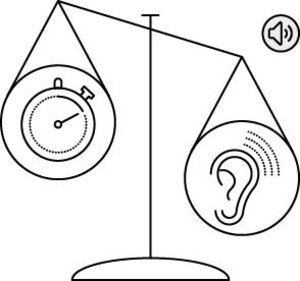
STI low
Play audio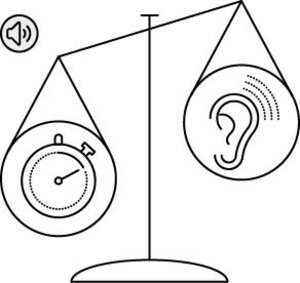
STI high
Play audioA/V ratio
In addition to reverberation time and speech intelligibility, the A/V ratio is an important parameter for rooms in which measures for room damping are recommended. In this respect, DIN 18041 specifies a minimum ratio of the total absorption surface area (A) available in the room to the room volume (V). This value depends on the usage of the room and the room height.


